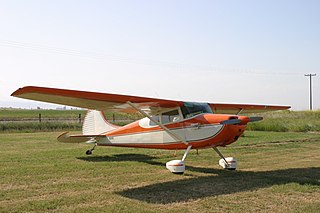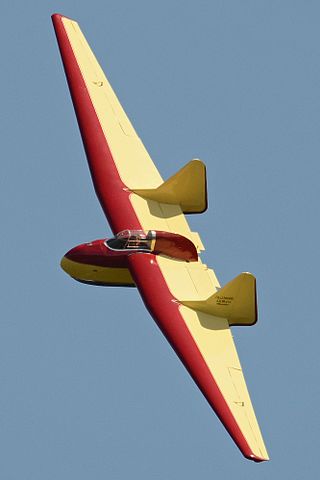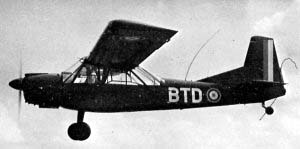
The Cessna 170 is an American single-engine, four seat, general aviation aircraft produced by the Cessna Aircraft Company between 1948 and 1956.

The Consolidated TBY Sea Wolf was a United States Navy torpedo bomber of World War II. It was designed by Vought but entered service and was manufactured by Consolidated Aircraft due to high demand for production lines. A competitor and contemporary to the Grumman TBF Avenger, both were designed to replace the older TBD Devastator but the Sea Wolf was subject to substantial delays and never saw combat in WW2. The design was developed a bit further, with a large Navy order for 1100, but only 180 of the TBY-2 type were built before cancellation after VJ Day. An order of 600 for the TBY-3 was also stopped.

The Vought OS2U Kingfisher is an American catapult-launched observation floatplane. It was a compact mid-wing monoplane, with a large central float and small stabilizing floats. Performance was modest because of its low-powered engine. The OS2U could also operate on fixed, wheeled, taildragger landing gear.

The Vought XF5U "Flying Flapjack" was an experimental U.S. Navy fighter aircraft designed by Charles H. Zimmerman for Vought during World War II. This unorthodox design consisted of a flat, somewhat disc-shaped body serving as the lifting surface. Two piston engines buried in the body drove propellers located on the leading edge, at the wingtips.

The Fleet Finch is a two-seat, tandem training biplane produced by Fleet Aircraft of Fort Erie, Ontario. There were a number of variants mainly based on engine variations. Over several years beginning in 1939, a total of 447 Finches were built, nearly all (431) of them for use as elementary trainers in the British Commonwealth Air Training Plan (BCATP) during the Second World War.

The Fauvel AV.36 was a single-seat tailless glider designed in France in the 1950s by Charles Fauvel. Although the "AV" in AV.36 stands for Aile Volante, it was not a true flying wing: it featured two large fins mounted on stubby tailbooms extending back from the wing's trailing edge, and accommodated the pilot within a stubby fuselage. The aircraft was designed to be quickly disassembled for road transport, with the nose detaching, and the fins able to fold back against the trailing edge of the wing. A refined version with a slightly longer wingspan, the AV.361 was introduced in 1960.

The Vought V-173 "Flying Pancake" was an American experimental test aircraft built as part of the Vought XF5U program during World War II.

The Curtiss Fledgling, known internally to Curtiss as the Model 48 and Model 51 was a trainer aircraft developed for the United States Navy in the late 1920s and known in that service as the N2C.

The Fauvel AV.22 was an unorthodox glider produced in France in the 1950s, 60s, and 70s. Originally intended to be produced in series, it was later marketed to homebuilders. Like other Charles Fauvel designs, it was a tailless aircraft, and this particular design featured wings with a slight forward sweep.

The Ryan S-C (Sports-Coupe) was an American three-seat cabin monoplane designed and built by the Ryan Aeronautical Company. At least one was impressed into service with the United States Army Air Forces as the L-10.

The Nord 3400 Norbarbe was a French two-seat observation and casualty-evacuation aircraft built by Nord Aviation for the French Army Light Aviation.
Raoul J. Hoffman was a Hungarian-born Jewish engineer and writer who moved to the United States of America notable for the aircraft he designed or helped to design.

The Arup S-4 is the last in a series of round-wing aircraft from C.L. Snyder.
The Arup S-1, also called the Snyder Glider and the Dirigiplane was the first in a series of "Heel Lift" vehicles developed by Dr. Cloyd Snyder.
The Hatfield Little Bird aircraft are a continuation of the Arup series of low aspect ratio aircraft.

The Curtiss CA-1 was an American five-seat biplane amphibian designed by Frank Courtney and built by Curtiss-Wright at St Louis, Missouri.
The APEV Pouchel Classic is a French amateur-built aircraft, designed by Daniel Dalby and produced by APEV of Peynier. The aircraft is supplied as plans or as a kit for amateur construction.

The APEV Pouchel II is a French amateur-built aircraft, designed by Daniel Dalby and produced by APEV of Peynier. The aircraft was supplied as plans or as a kit for amateur construction, but is no longer available. It has been replaced in production by the APEV Pouchel Light

The St-Just Cyclone, also called the St-Just Cyclone 180, is a Canadian homebuilt aircraft that was designed and produced by St-Just Aviation of Mirabel, Quebec. The company has since moved to Boucherville, Quebec. While it was available the aircraft was supplied as a kit and in the form of plans for amateur construction.
The American Homebuilts John Doe is an American STOL homebuilt aircraft that was designed by Steve Nusbaum and produced by American Homebuilts of Hebron, Illinois, first flown in 1994. When it was available the aircraft was supplied as a kit for amateur construction.















